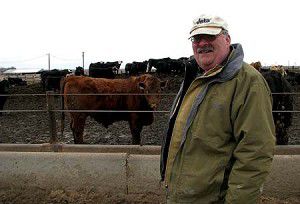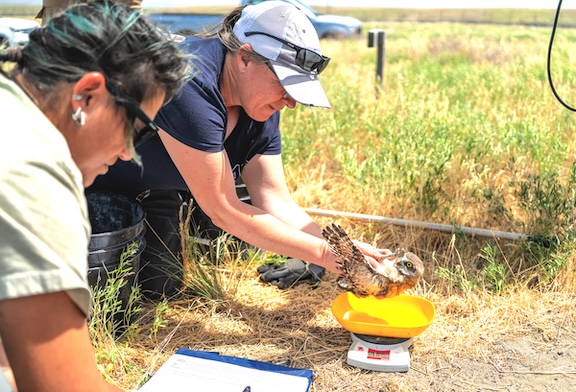Economist blames lower exports, higher feed prices, economy
Published 11:18 am Wednesday, June 17, 2009

- Sam Rudnick has been in the livestock feeding business all his life. He and his wife, Toni Rudnick, own and operate Reata Ranches near Hermiston.<BR><I>File photo</I>
Tight margins in the beef industry led to a nationwide slowdown in slaughter in December 2008 and an 8.56 percent decrease in the first quarter of 2009 compared with the same time last year.
Trending
Beef cow slaughter in 2008 at 35.9 million head eclipsed 2007’s 31.7 million, according to the Livestock Marketing Information Center in Denver.
First quarter 2009, however, at 7.45 million head, was down 700,000 head from 2008’s 8.15 million head.
“Beef numbers have been dropping the last couple of years,” said Wilson Gray, University of Idaho economist at Twin Falls.
Trending
“Heifer retention is down. No one is planning to replace anything. There’s no herd building, they’re just replacing what they had to cull.”
Lower exports – stemming from the December 2003 discovery of a U.S. cow with bovine spongiform encephalopathy – along with high feed prices, a global economic downturn and a strengthening U.S. dollar have all ganged up on U.S. beef producers, Gray said.
“The beef industry is marginal. The feedlot industry hasn’t made money in the last 18 months,” he said. “But if they’ve been watching their costs, they’re probably OK. It’s better than the dairy industry.”
Supply-wise, prices should be better than they are, Gray said, but the economic downturn has taken a bite out of the domestic restaurant business, as much as 20 percent at high-end eateries.
Feed prices are down from last year’s highs, but they are still double the price they used to be.
In 2006, corn was $2 to $2.25 a bushel. That shot up to $7 a bushel last summer and is $3.75 to $4 now, he said.
Exports are gaining ground, but it’s been a slow road back after the BSE hit that brought beef and veal exports down from 2.5 billion pounds in 2003 to 460 million in 2004. Exports in 2008 totaled 1.89 billion pounds, according to USDA’s Economic Research Service.
“We’re not at pre-BSE levels, but we have come back quite a bit,” Gray said.
Exports of U.S. beef in the first quarter of 2009 totaled 384 million pounds, a 7 percent increase from last year, according to USDA-ERS. But overall, beef exports are expected to fall 8 percent in 2009 to 1.74 billion pounds.
Cattle on feed numbers are also indicative of lower demand and tighter margins in the industry.
“Nationally, those numbers have been decreasing the last seven or eight years,” Gray said.
“Drought or something else (such as wildfires) held people back from increasing their herd.”
Cattle and calves on feed for slaughter market in the U.S. for feedlots with capacity of 1,000 or more head totaled 10.8 million head on May 1, 3 percent below May 1, 2008, according to USDA’s National Agricultural Statistics Service.
That marked the 13th consecutive month of a year-to-year decline, according to the Livestock Marketing Information Center.
Placements in feedlots during April totaled 1.60 million, 4 percent above 2008, but down 4 percent compared with the five-year average (2003-2007).
Year-to-year declines in on-feed inventories have translated into annual declines in steer and heifer slaughter, the Livestock Information Center reported in its May 22 Livestock Monitor.
Steer and heifer slaughter for the first six months of 2009 is estimated to be about 5 percent below a year ago, down more than 700,000 head.
In the second half of 2009, that slaughter is forecast to be slightly below a year ago, but total U.S. slaughter could post an increase if dairy cow liquidation more than compensates for annual declines in beef cow slaughter.
USDA’s Economic Research Service, in its May 22 Livestock, Dairy & Poultry Outlook, noted a declining breeding herd. As of April, the share of steers and heifers on feedlots of 1,000 head or more continued its upward trend, climbing from a low in April 2006, and is indicative of a lack of breeding herd expansion.
“This trend, along with a proportionately large cow slaughter, suggests a further decline in total cow inventories in 2009,” the report states.
“The ensuing sequentially smaller calf crops in 2009, 2010 and perhaps beyond … will likely result in fewer cattle for placement in feedlots and eventually slaughter.”









